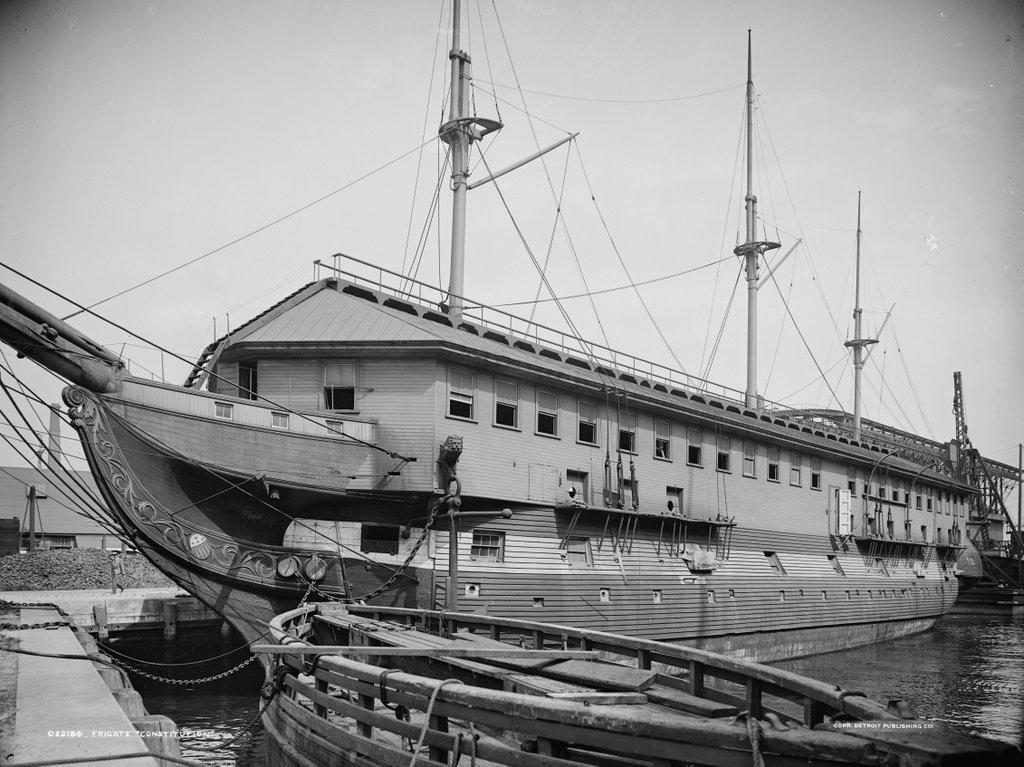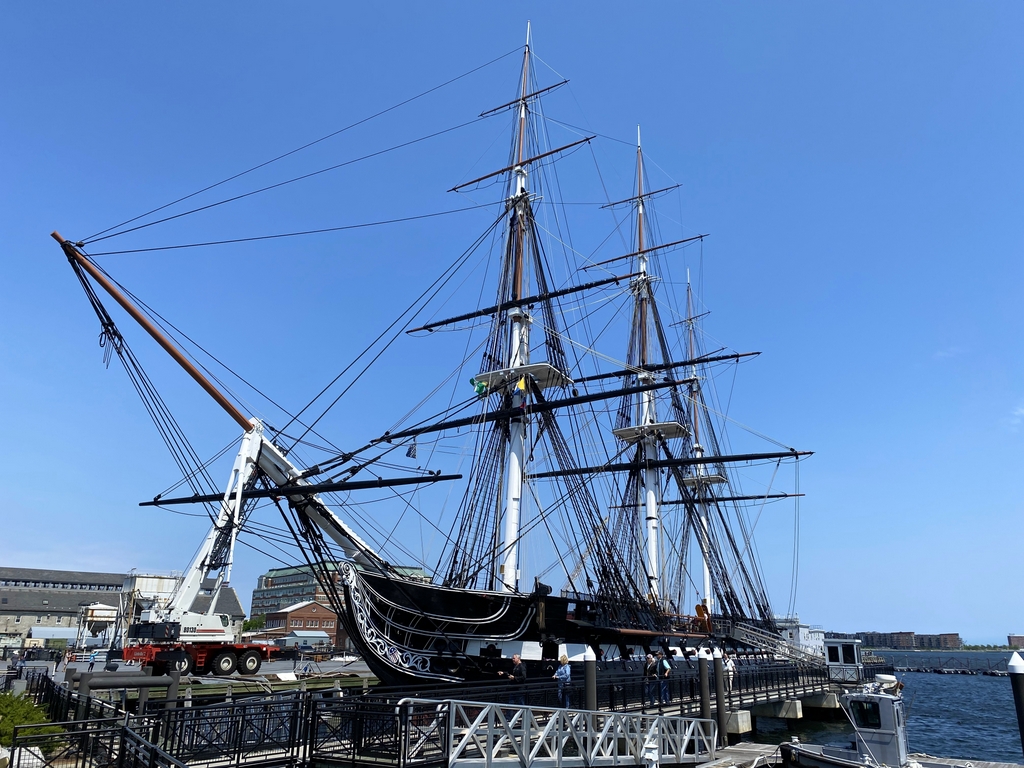The USS Constitution at the Charlestown Navy Yard in Boston, around 1905. Image courtesy of the Library of Congress, Detroit Publishing Company Collection.
The Constitution at the same dock in 2022:
These two photos show the USS Constitution, the oldest commissioned warship afloat in the world. Constructed across the harbor in Boston at Edmund Hartt’s shipyard, the Constitution was one of six frigates that were authorized by the Naval Act of 1794. Prior to this act, the United States did not have a standing navy, with the earlier Continental Navy having been disbanded after the end of the American Revolution. The initial motivation for constructing these ships was to protect American shipping from Barbary pirates in North Africa, but they would also see extensive service in the Quasi War against France and in the War of 1812 against Britain.
The Constitution was launched in 1797 and departed on its first patrol in 1798, during the Quasi War. It later served in the First Barbary War, but the Constitution would earn its fame for its role in the War of 1812. Over the course of the war, it sank or captured five British warships, and it earned the nickname of “Old Ironsides” after its August 19, 1812 defeat of the HMS Guerriere. The ship was later further immortalized by Oliver Wendell Holmes’s 1830 poem “Old Ironsides,” which was written in response to a news article that the navy was planning to scrap the Constitution.
The ship would remain in active service throughout most of the 19th century, including being used as a training ship during and after the Civil War. However, by 1881 it was in poor condition, and it was brought to Portsmouth Naval Shipyard and converted into a receiving ship for housing sailors who were not currently assigned to a crew. This conversion included the construction of barracks on the deck of the ship, as shown in the top photo.
In 1897, the Constitution was moved back to Boston, just in time for the centennial of its launch. The top photo was taken about 8 years later, showing the ship moored on the western side of the Charlestown Navy Yard. At this point, the fate of the famous ship was still very uncertain. That year, the secretary of the navy proposed sinking it as a target ship, but it prompted an outcry similar to that which had prompted Holmes’s poem some 75 years earlier.
This sentiment led to the restoration of the ship, including removal of the barracks structure, and it was subsequently opened to the public as a museum ship. However, within a few decades it once again needed significant repairs due to rot. This prompted a campaign in which schoolchildren across the country contributed pennies to raise money to save the ship. The restoration work began in 1927, and it took nearly three years to complete. During this time, about 85% of the ship’s wood was replaced. The Constitution then embarked on a three-year tour of the country, including transiting the Panama Canal and visiting ports on the Pacific coast. However, while the ship was seaworthy enough to make the voyage, it did not actually sail, but was instead towed from port to port.
The Constitution ended up needing additional repairs in the 1970s, and then another major overhaul in the mid-1990s. The latter was completed in time for the ship’s 200th anniversary, which was celebrated with a trip from Boston to Marblehead. Along the way, the Constitution sailed unassisted for part of the voyage, marking the first time that it had done so since before it was retired from active duty in 1881.
Today, more than a century after the top photo was taken, the Constitution is still moored at the same wharf at the former Charlestown Navy Yard, which is now part of the Boston National Historical Park. The ship is still a commissioned warship of the United States Navy, with officers and crew members who are assigned to it. Thanks to the many restorations over the years, the ship now looks much more like its historic appearance than it did when the first photo was taken. The Constitution is one of the many famous historic landmarks along Boston’s Freedom Trail, and it is open to the public for tours.


